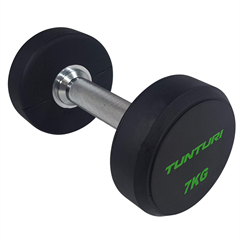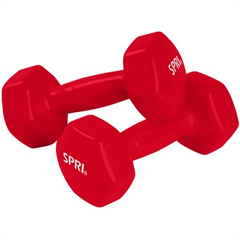Dumbbell training can be highly beneficial for athletes of various sports, as it helps improve strength, power, stability, and muscular balance. Incorporating dumbbell exercises into an athlete’s training program can enhance their performance and reduce the risk of injury. Here are some guidelines and key exercises for athletes incorporating dumbbell training into their routines:
1. Assess Specific Needs:
- Identify the specific demands of your sport and position. Different sports require different types of strength and conditioning. Tailor your dumbbell workout to address your sport’s unique requirements.
2. Full-Body Workouts:
- Athletes should aim for a well-rounded, full-body workout. This helps ensure overall muscular balance and functional strength. Include exercises that target the upper body, lower body, and core.
3. Periodization:
- Implement periodization in your training plan. This involves cycling through phases of training that focus on different aspects of fitness, such as strength, power, endurance, and recovery. Adjust your dumbbell workouts accordingly.
4. Core Strengthening:
- A strong core is essential for athletic performance. Include exercises like dumbbell wood chops, Russian twists, and planks to strengthen your core muscles.
5. Explosive Power:
- Many sports require explosive power. Incorporate exercises like dumbbell snatches, dumbbell clean and press, and box jumps to improve power and explosiveness.
6. Functional Movements:
- Focus on functional movements that mimic the actions and demands of your sport. For example, if you’re a tennis player, include exercises that improve lateral agility and rotational power.
7. Single-Leg Exercises:
- Single-leg exercises like dumbbell step-ups, lunges, and Bulgarian split squats can help improve balance and stability, which is crucial for sports like basketball, soccer, and running.
8. Rotator Cuff and Shoulder Health:
- Athletes should pay special attention to shoulder health. Exercises like dumbbell external rotations and Y-raises can help strengthen the rotator cuff and improve shoulder stability.
9. Rest and Recovery:
- Adequate rest and recovery are vital for athletes. Ensure you have rest days built into your training plan to prevent overuse injuries and allow your muscles to recover.
10. Proper Form:
- Maintain proper form and technique during all exercises to prevent injury. If you’re unsure, consider working with a certified trainer to ensure you’re using correct form.
11. Warm-Up and Cool Down:
- Always warm up before a workout and cool down afterward. This helps prepare your body for exercise and aids in recovery.
12. Nutrition and Hydration:
- Proper nutrition and hydration are crucial for athletes. Fuel your body with the right nutrients and stay hydrated to optimize performance and recovery.
13. Periodic Assessment:
- Regularly assess your progress and adjust your training program accordingly. As you become stronger and more skilled, increase the intensity and complexity of your dumbbell workouts.
Remember that the specific exercises and training methods will vary depending on your sport and position. It’s advisable to work with a qualified coach or sports-specific trainer who can design a personalized dumbbell training program tailored to your athletic goals and needs.


















